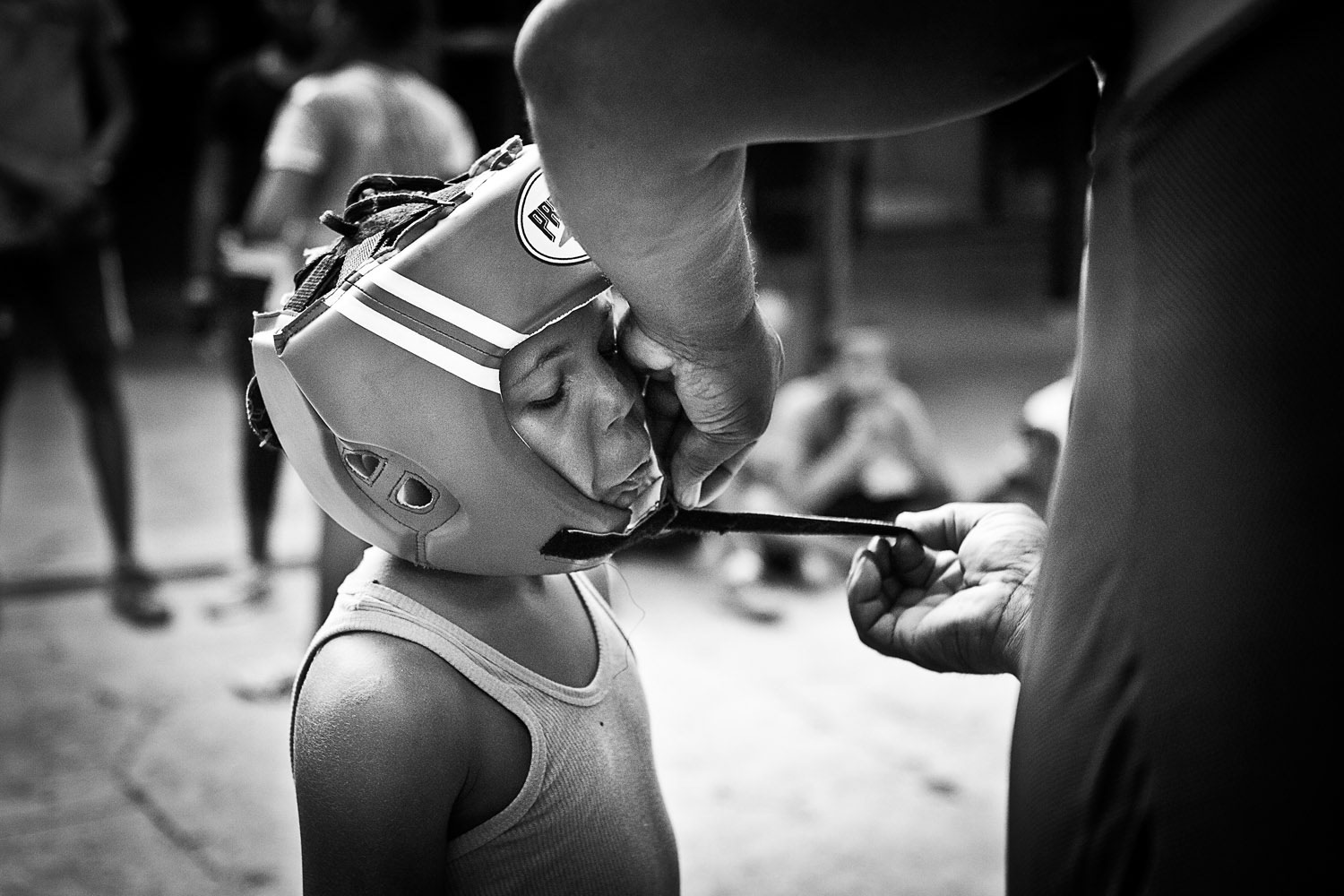Two years later government banned boxing because of violence on the streets between black and white people. Therefore boxing matches had to go behind closed doors as it grew popular throughout the island.
Despite the banishment of the sport at the time, for the lower classes, boxing became a possible ticket out of poverty.
In 1921 Cuban government decided to give it another chance and legitimized boxing again. Rafael Trejo Gimnasio de Boxeo is one of the oldest boxing gyms in Havana, being named after the revolutionary, Rafael Trejo, who was killed in 1936.
A home to some of Cubas elite athletes and young champions-to-be is located in Habana Vieja, where only a small sign identifies the spot. One old cigar smoking man is waiting in front of the door every day just to tell you that today it’s closed.
„Just try it tomorrow again“ he said for three days in a row.
It takes quite a while to find out the opening times of this special place. A place as simple and unique as this training ground with an open-sky ring trapped between deteriorating apartment buildings, is where you can find ambition and hope in the eyes of the young boxing talents. The walls around the entrance area show old posters and photos of famous boxers. It describes a time of fame and glory.
The athletes train hard and concentrated, using old equipment. The older boxers share the space with those who are just starting out their career. After a career of fighting for their country most Cubans continue to stay in the sport, many as administrators or trainers. Through this way the knowledge and experience is passed down to the next generation of athletes.
About the author:
Marina Schedler is a young photographer based in Austria. She studied photography at the college of photography and audiovisual Media in Vienna and currently lives in western Austria. Photo stories like this are the perfect coalescence of her passions traveling and documentary photography.











